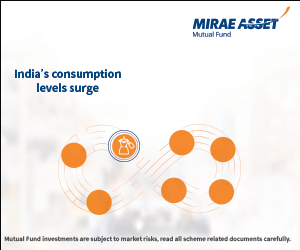The best investment choice for our children: Part 1 of 2

The future of our children is probably the biggest concern for most parents. Many parents start saving for their children’s education and marriage, soon after the child is born. This is, of course, the right thing to do, because the parents can benefit from power of compounding while the child is growing up. As far as investment choices for their children are concerned Indian parents are mostly conservative. Public Provident Fund, National Savings Certificate and life insurance endowment plans have traditionally been the preferred investment options for the children’s education and marriage. These investment options continue to be preferred choice of a majority of parents today. While these investment choices offer safety of capital, on the flip side the yield of these investments is quite limited. Cost of living in general and cost of education in particular has been increasing at such a pace in India, that relying on low yield investments may leave parents short of the goals they have set for their children or force them to compromise on other important goals like retirement planning. In this two part series, we will discuss investment choices that will help parents meet the financial goals for their children’s future.
The cost of professional education in India nowadays is easily in the range of र 10 – 12 lacs. As per market surveys, education cost is growing at a rate of 20 - 25% per annum. PPF interest rate is currently at 8.7%. NSC interest rates are 8.5% and 8.8% for the 5 year and 10 year schemes respectively. PPF returns are tax free, but NSC returns are not. You can get 80C tax benefit for the accrued interest deemed for reinvestment in NSC, but the accrued interest for the final year of your NSC scheme is taxable as per your tax rate. Returns of life insurance endowment plans are tax free, but it is only around 6%. You can do the math yourself to see how much you will need for the higher education of your young child factoring in inflation and the maturity amount of your investment at your current savings rate or even at an accelerated savings rate. Simply put, the gap between the cost inflation in education and returns of low risk investment options is just too large. The thought of falling short of our children’s goals is difficult for any parent. Fortunately many young, financially savvy, parents are investing in equity mutual funds which over a horizon of 10 to 15 years, when the children are growing up, can give sufficient returns to beat inflation and with proper planning can help the parents meet the financial goals for their children, without having to compromise on other important life goals. However, when it comes to equity investment the biggest worry of the average investor is risk, the worry about the safety of your capital. When it concerns the future of our children, can we take risks? There two points that parents need to consider regarding risk of equity investments. Firstly, the yields of low risk investment (e.g. PPF, NSC etc.) falling substantially short of cost inflation, leave you with the risk of not meeting the financial goal for your children. Secondly, we need to understand risk and return in the context of long investment horizon. While the notion of risk is largely psychological for the average investors, thankfully there are quantitative measures of risk, which can enable the investors get a sense of expected returns and deviations thereof from a probabilistic standpoint.
Risk and return in equity investing
Mutual funds are subject to market risks. The net asset value (NAV) of your mutual fund investment goes up or down on a daily basis. This is also known as volatility. But should you worry about daily volatility, if you are a long term investor? Over the last 10 years, the Sensex has given an annualised return of 16.8%, despite through big crash in 2008. Over the last 15 years, the average rolling 10 years (i.e. average point to point returns of all 10 year periods starting November 1999 to November 2014) is about 17%. The standard deviation of rolling 10 year returns over the last 15 years is 2%. Standard Deviation is a measure of risk or volatility and measures the deviations from the average return on investment. Standard deviation gives us the sense of downside risk within the context of a probability distribution of Sensex returns. Probability distribution is nothing but the probability or likelihood of all possible returns of the Sensex. It has been observed that equity returns follow a probability distribution called Normal or Gaussian distribution, in which most of possible returns are clustered around the average return and then tails of symmetrically from the average. The shape of the distribution is therefore like a bell and this distribution is more popularly known as the bell curve. The diagram below shows the bell curve and probability of returns exceeding or being less than 1 standard deviation, 2 standard deviations and 3 standard deviations from the average.

In the diagram above, µ is nothing but the average and σ is the standard deviation (SD). The average Sensex 10 year rolling returns (µ) since 1999 is 17%. The standard deviation of 10 year rolling returns (σ) is 2%. The probability that the expected 10 year rolling returns is less than 2 standard deviations from average is 2.28%.Therefore while the expected 10 year annualized Sensex returns is about 17%, the probability of Sensex returns being lower than 13% is only 2.28%, based on the last 15 years data. Nobody can predict the future, but a statistical analysis of last 15 years Sensex returns can give you a probabilistic perspective of what to expect. We have discussed the statistical framework of risk in equity investing in our article, How to interpret risk in equity investment for effective financial planning. The analysis of historical Sensex returns gives us a high degree of confidence (over 97%) that equities can beat inflation and provide much higher returns than risk free or low risk investments in the long term. Equity markets are volatile in the short term depending on the demand and supply situation, but in the long term markets are driven fundamental factors like GDP growth, corporate earnings growth etc. In a developing economy like ours, it can be expected with fairly high degree of confidence that equities will give good returns in the long term.
Mutual funds are ideal investment options for planning your children’s futures
We have seen that equity is the best long term investment choice for your children. As such good equity mutual funds through systematic investment plans (SIPs) are ideal investment options for your children as they are growing up. Long term capital gains in equity funds are tax free. You can even save taxes under Section 80C by investing in Equity Linked Savings Schemes (ELSS). Financial planning for your children is a dynamic process. As your children approach their life milestones like higher education or marriage, you need to rebalance your investment portfolio to have a greater allocation to debt investments where the risk is considerably lower, while you still earn a decent return. There are enough mutual fund products across risk profiles like equity funds, balanced funds, monthly income plans, income funds etc, that parents can choose when their child is growing to optimize the returns while ensuring that the risk profile of their investment portfolio is consistent with the financial plan for their children.
Parents can also opt for mutual fund child plans. Mutual fund houses like HDFC, ICICI Prudential, UTI, Templeton, Tata and SBI offer a variety of choices as far child plans are concerned. Child plans also help earmark funds for specific goals, dividing the portfolio into several categories. This makes it simpler for a parent to monitor the investment for a particular goal. This segregation is important because each goal has a different time frame and, therefore, requires a different investment mix. For example, your child’s college or higher education may only be two or three years away and while his or her marriage may be five or six years away, prompting different investment choices for these two goals. We have discussed child plans in our article, Investing for the future of your children.
When your children reach their milestones, you can redeem your investment either through systematic withdrawal plans (SWP) to meet the cash flow needs of your children’s higher education or in lump sum to fund the expense of their marriage.
Conclusion
In this article we have discussed why you should invest in equities to meet your children’s financial goals. We have also discussed in brief how mutual funds can help you plan for your children’s future. In the second part of this series, we will discuss how you can use mutual funds and life insurance to meet the financial goals of your children.
Queries
-
What is the benefit of mutual fund STP
Aug 29, 2019
-
How much to invest to meet target amount of Rs 2 Crores
Aug 26, 2019
-
Can I achieve my financial goals with my current mutual fund investments
Aug 24, 2019
-
Can you tell me return of various indices
Aug 19, 2019
-
What would be the post tax return on different investments
Aug 18, 2019
-
Which Principal Mutual Fund scheme will be suitable for my retirement corpus
Aug 16, 2019
-
What is the minimum holding period for availing NCD interest
Aug 4, 2019
Top Performing Mutual Funds
Recommended Reading
Fund News
-
Axis Mutual Fund joins ONDC Network to Expand Access to Mutual Fund Investments
Apr 18, 2025 by Axis Mutual Fund
-
Nippon India Mutual Fund launches Nippon India Nifty 500 Quality 50 Index Fund
Apr 18, 2025 by Advisorkhoj Team
-
Nippon India Mutual Fund launches Nippon India Nifty 500 Low Volatility 50 Index Fund
Apr 18, 2025 by Advisorkhoj Team
-
RBI Monetary Policy: RBI changes policy stance and lowers rate
Apr 9, 2025 by Axis Mutual Fund
-
Kotak Mahindra Mutual Fund launches Kotak Nifty Top 10 Equal Weight Index Fund
Apr 7, 2025 by Advisorkhoj Team













